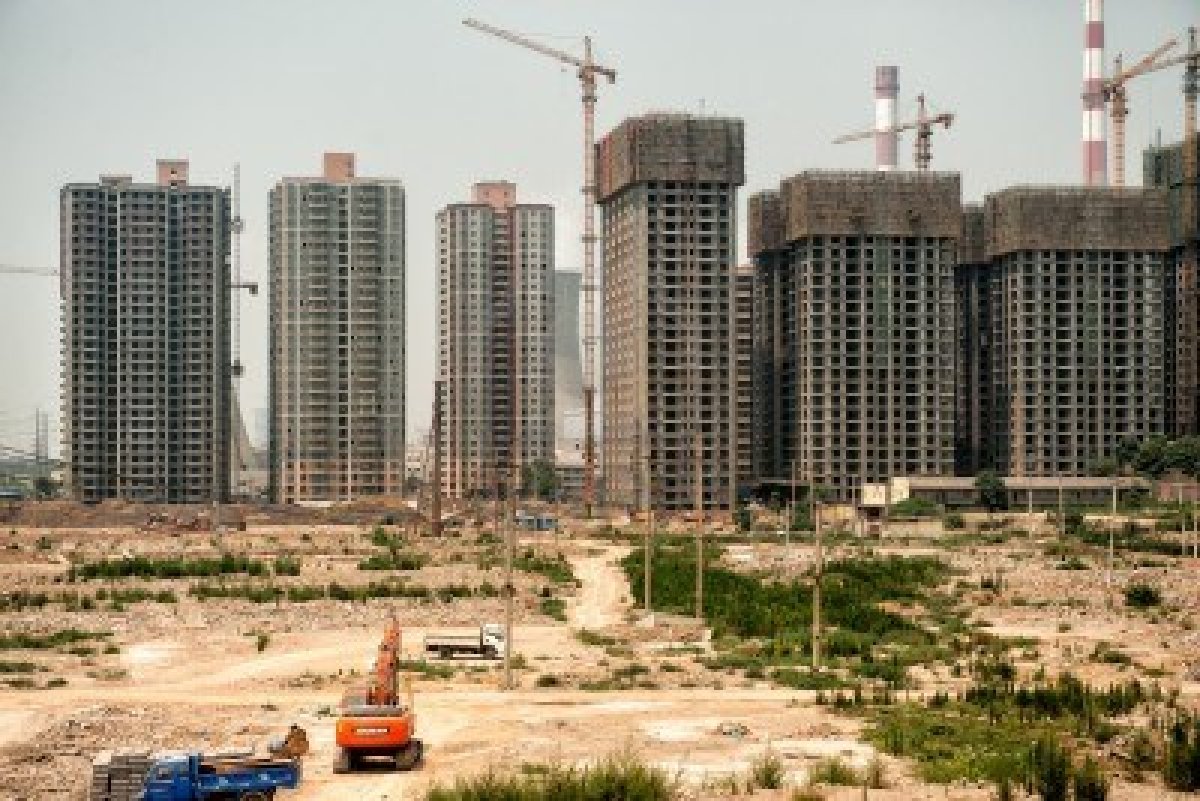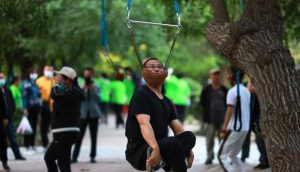
If you’re more a linguist than an economist, getting your head around the ins and outs of China’s rapid rise can be the stuff of nightmares. So we’ve decided to tackle the subject as simply as possible. Today, we present China’s housing crisis for dummies – be sure to check the supplementary vocabulary provided so you can natter away about it in Mandarin!
Economists refer to ‘bubbles’ to describe instances where a surge in the market for a particular commodity causes high levels of activity in that market segment. As people rush in to invest in that commodity, increased speculation leads to prices rising at an exaggerated rate. Much like a bubble inflating, there is a limit to how high prices can rise before they become unsustainable. Unless prices are brought under control, the bubble will burst, prices will crash, and those who have invested in that commodity will see the value of their assets plummet.
In China, one such commodity has been housing. Between 2005 and 2013, average house prices across the country more than tripled; in major cities such as Beijing and Shanghai, this figure rose to eight to ten times. Despite an increase people’s average incomes, this still understandably priced many people out of the market. Let’s take a look at how China’s housing bubble grew.
Beginning around 2003, China’s erstwhile premier, Wen Jiabao, started to encourage China’s banks to provide cheap credit for individuals and companies hoping to build or buy new property. This coincided with the government’s more open attitude to private property ownership, as opposed to the state or collective ownership of all property which was a feature of the pre-reform socialist system. Private property ownership was enshrined in the constitution in 2004.
Put simply, this all allowed regional and local governments to sell land more freely to construction companies, made it cheap for those companies to build, and provided official recognition for consumers who wanted to own their own home. They did just that: in the past ten years, construction and infrastructure development has become a major facet of Chinese economic growth, and property ownership has soared.
China’s housing market was already showing signs of bubbling in 2008 when the global financial crisis hit. The country’s economic growth came under serious threat as buyers across the world tightened their belts and demand for Chinese exports dropped. To make up for the shortfall in exports, the government released an economic stimulus programme. In basic terms, this involved the state creating US$568billion of fresh money and investing it largely in housing, rural infrastructure, transportation, industry, and education, with a particular focus on regenerating the areas hit by the 2008 Sichuan earthquake. At least in the short term, the programme was successful, insofar as the extra money prevented an economic slowdown that could have potentially sparked social unrest.
However, these kinds of stimulus packages can also distort the activity of markets that would behave differently if left alone. Although economic stimuli can create new jobs, generate demand for raw materials, and attract investment into new projects, it can also devalue the money already in the economy. In addition, a by-product of such programmes is that they tend to allow wasteful or poorly thought-out projects to get the green light. Both of these things happened in China, but most importantly, the extra money from the stimulus package provoked a general rise in inflation. Wages rose, as well as food and rent prices.
Let’s take a step back now and consider how saving money works in China. The interest rate paid on savings at Chinese banks tends to be negative in real terms, meaning that although interest in earned on savings, it does not keep pace with the value of inflation. As prices continue to rise, you can’t buy as much with the money you’ve saved, making it generally less valuable – as if you have less money, not more. In addition, the renminbi is still only partially convertible into other currencies, making it difficult for people to invest their savings abroad. For people with significant amounts of Chinese currency in savings, then, it is desirable to find alternative ways to maintain and grow the value of savings while keeping it in the country.
For many of China’s middle class, the answer has been to invest in property. Property values have always traditionally risen at a rate slightly higher than inflation, which means that the money you invest in housing can, in theory, guarantee the stability of your wealth for years to come. As prevailing financial policy in China favoured this route, and speculators pumped more and more money into the housing market, the housing bubble quickly inflated. Stories of wild speculation ran abound as people bought up tens, even hundreds, of new houses as a way to store their wealth.
Despite a dip in property prices during the 2008 financial crisis, the market quickly recovered and eventually levelled out by about 2011. By this time, the government had taken steps to bring the bubble under control. Among the policies laid down were a requirement that a 40% down-payment on second home purchases and the restriction of home ownership in Beijing to two properties for long-term residents of the capital and one for buyers from outside the city limits. A sales tax on property was also brought in to curb undue amounts of speculative investment. From the autumn of 2011, property prices started to level out or fall. In the face of real estate developers panicking and offering sharp discounts on property, the Shanghai government even banned the underselling of housing by anything over 20%.
China’s property crisis is not over yet, although it seems as though the bubble has been brought under a certain amount of control. Its legacy, however, continues to manifest itself visibly in the country’s ‘ghost towns’, vast new developments where properties have either not been sold or bought merely to tie up savings and stand empty. A famous example of this is Kangbashi New Area in Ordos, Inner Mongolia, a ghost town of 30,000 people living in a city designed to hold 300,000. The construction boom has also contributed a number of huge non-residential ghost towns, like the New South China Mall in Dongguan, the largest shopping centre in the world, whose 2,300 retail spaces lie empty save for a mere 47 stores on the roadside, and the city of Tianjin, where it is estimated that it would take 25 years of development for the city to fill the extra office space that has been thrown up.
Key Vocabulary:
property bubble = 房地产泡沫
system of private ownership = 私有制
system of state ownership = 国有制
to speculate (in the real estate market) = (在房地产业中)进行投机
the construction industry = 建筑业
economic stimulus package = 经济刺激方案
ghost town = 鬼镇























